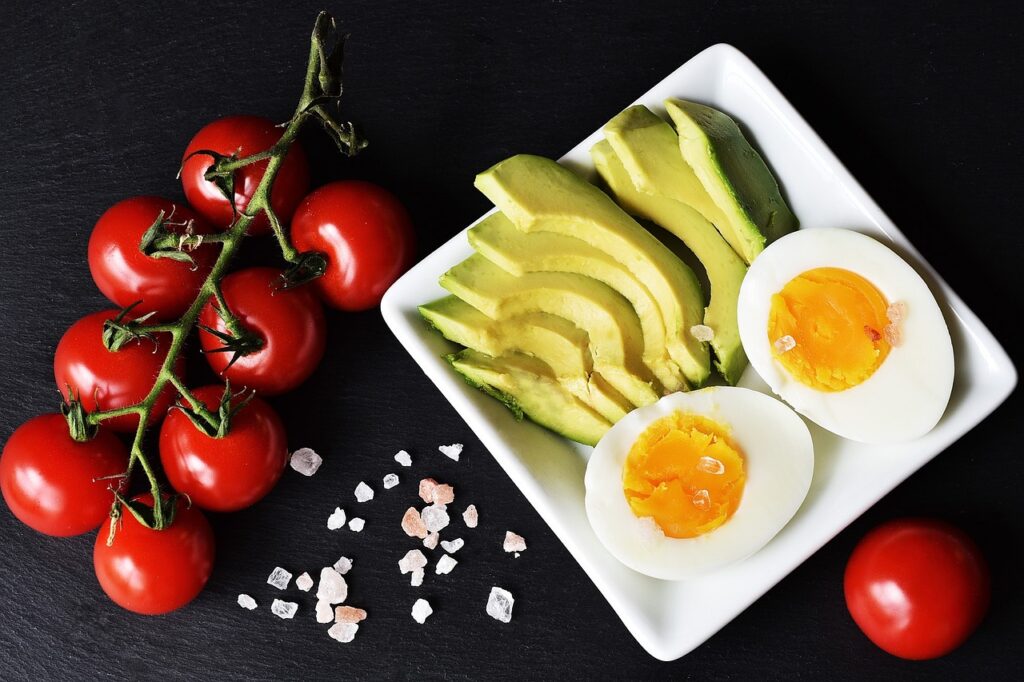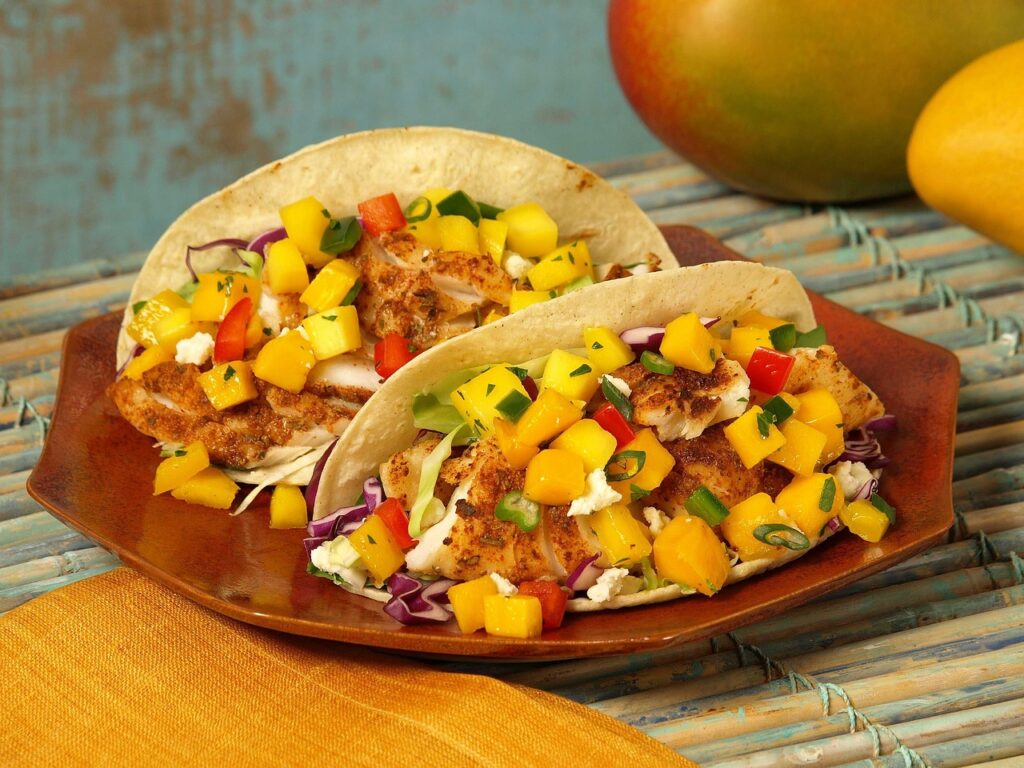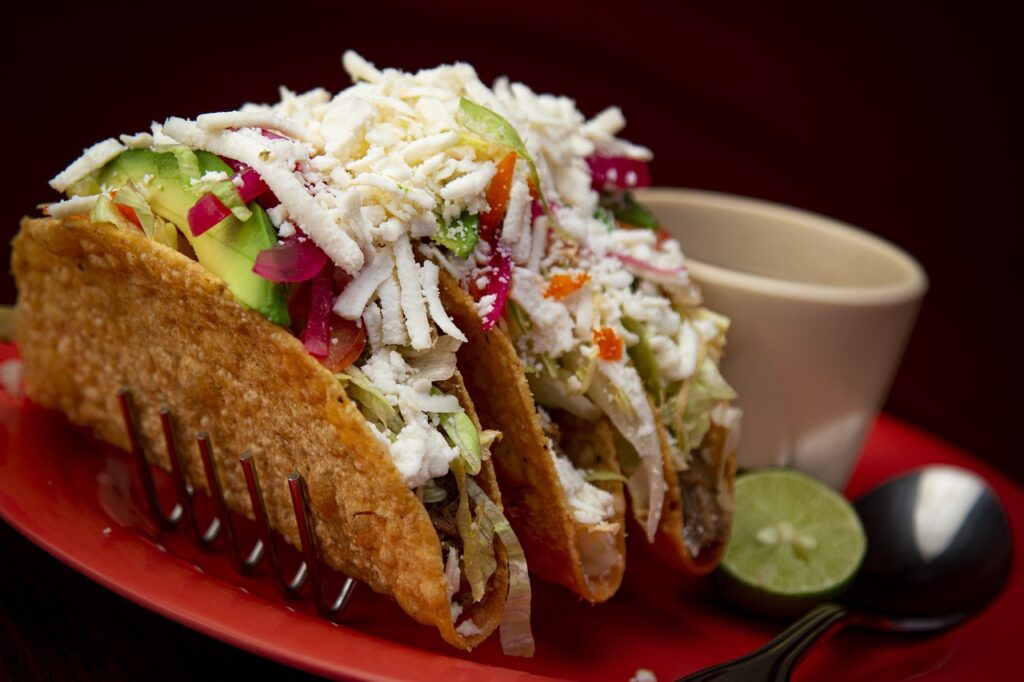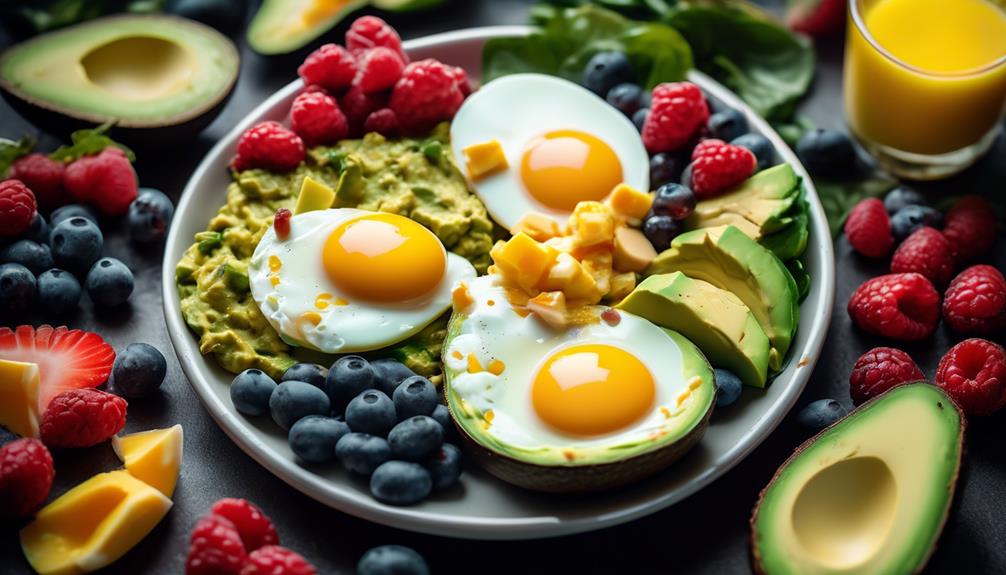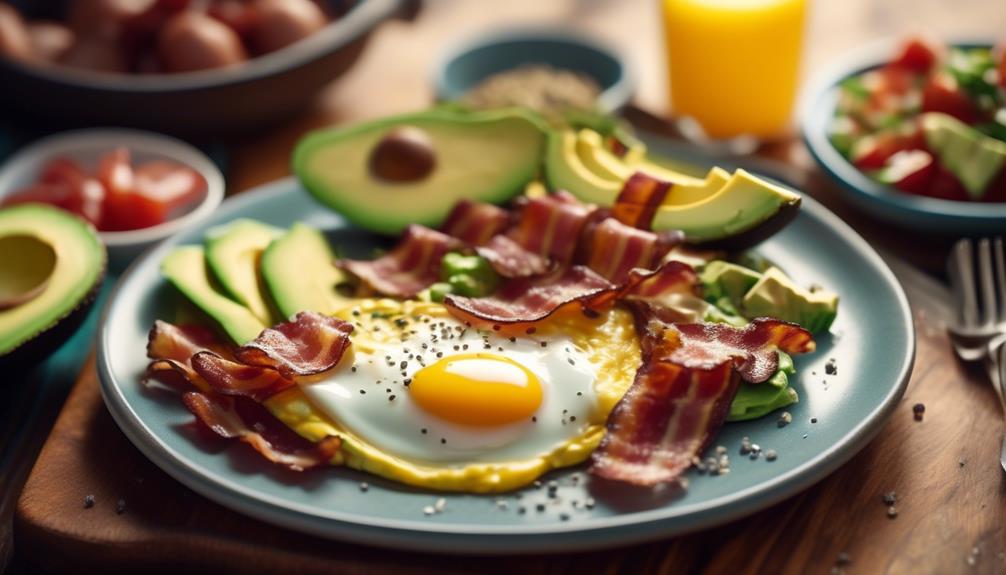So, you've decided to embrace the dairy-free, keto lifestyle. Good for you! But let's be honest, one of the hardest things about going low-carb is saying goodbye to pasta.
The thought of a creamy, cheesy bowl of goodness might leave you feeling a bit nostalgic. But fear not, because we've got you covered.
In this article, we'll explore 14 dairy-free keto pasta substitutes that are not only delicious, but will also leave you wondering why you didn't try them sooner.
Get ready to discover a whole new world of pasta alternatives that will satisfy your cravings without compromising your health goals.
Zucchini Noodles

To make your dairy-free keto pasta dish, zucchini noodles are a versatile and healthy substitute for traditional wheat pasta. Zucchini noodles, or 'zoodles,' are made by spiralizing fresh zucchini into long, thin strands that resemble spaghetti. They're a popular choice for those following a low-carb or ketogenic diet because they're low in carbs and calories while still providing a satisfying pasta-like texture.
One of the benefits of using zucchini noodles is their versatility. They can be prepared in a variety of ways, allowing you to create countless delicious and nutritious dishes. From simple sautéed zoodles with garlic and olive oil to more complex zucchini noodle recipes like zucchini carbonara or zucchini noodle lasagna, the possibilities are endless.
In addition to being low in carbs and calories, zucchini noodles are also packed with essential nutrients. They're a great source of vitamin C, vitamin A, potassium, and fiber. These nutrients contribute to overall health and can support weight loss efforts.
Zucchini noodles are also gluten-free and naturally dairy-free, making them a suitable option for those with dietary restrictions or food allergies.
Spaghetti Squash
If you're looking for a low-carb alternative to traditional pasta, spaghetti squash is a great option. Not only is it easy to cook, but it also offers several nutritional benefits.
Spaghetti squash is rich in vitamins and minerals, and it's a good source of fiber, making it a satisfying addition to any keto-friendly meal.
Cooking Spaghetti Squash
You can easily cook spaghetti squash by following these simple steps.
Start by preheating your oven to 400 degrees Fahrenheit.
Next, carefully cut the squash in half lengthwise and scoop out the seeds and pulp.
Place the halves face down on a baking sheet lined with parchment paper.
Bake for about 40-45 minutes or until the flesh is tender and easily shreds with a fork.
Once cooked, let the squash cool for a few minutes before using a fork to scrape the flesh into spaghetti-like strands.
Spaghetti squash works well with a variety of cooking techniques, such as sautéing, roasting, or even boiling.
As for flavor pairings, it pairs perfectly with marinara sauce, pesto, or even just a sprinkle of Parmesan cheese.
Get creative and enjoy your dairy-free keto pasta substitute!
Nutritional Benefits of Spaghetti Squash
Spaghetti squash is a nutrient-rich vegetable that offers a wide range of health benefits. Here are some reasons why you should consider adding it to your diet:
- Low in calories: Spaghetti squash is a great alternative to traditional pasta, as it's lower in calories and carbohydrates.
- High in fiber: This vegetable is high in fiber, which can aid in digestion and promote feelings of fullness.
- Packed with vitamins and minerals: Spaghetti squash is a good source of vitamins A, C, and B6, as well as minerals like manganese and potassium.
- Versatile cooking techniques: You can enjoy spaghetti squash by roasting, steaming, or even microwaving it.
- Nutritional comparison: When compared to pasta alternatives like wheat pasta or rice noodles, spaghetti squash is lower in calories and carbohydrates, while offering more fiber and nutrients.
Incorporating spaghetti squash into your meals can be a delicious way to boost your nutrient intake and enjoy a healthier pasta substitute.
Delicious Spaghetti Squash Recipes
To add a healthy and flavorful twist to your meals, try incorporating delicious spaghetti squash recipes into your repertoire. Not only is spaghetti squash a tasty alternative to traditional pasta, but it also offers several nutritional benefits.
Spaghetti squash is low in calories and carbohydrates, making it a great option for those following a keto or low-carb diet. It's also a good source of fiber, vitamin C, and manganese.
When it comes to cooking spaghetti squash, there are a few methods you can try. You can bake it in the oven, microwave it, or even cook it in a slow cooker. Whichever method you choose, be sure to cut the squash in half and remove the seeds before cooking.
Once cooked, simply use a fork to scrape out the spaghetti-like strands and enjoy with your favorite sauce or toppings.
Cauliflower Rice
Cauliflower rice is a great option for those following a dairy-free keto diet. Not only is it low in carbs and high in fiber, but it also provides essential vitamins and minerals.
To make cauliflower rice, simply chop cauliflower florets into small pieces and pulse them in a food processor until they resemble rice grains.
Nutritional Benefits of Cauliflower
With its low-carb profile and versatility in recipes, cauliflower rice offers a range of nutritional benefits. Here are some reasons why you should consider incorporating this healthy alternative into your diet:
- Packed with nutrients: Cauliflower is rich in vitamins C, K, and B6, as well as folate and potassium, which are essential for overall health and wellbeing.
- Low in calories: Compared to traditional rice, cauliflower rice has significantly fewer calories, making it a great option for those watching their weight.
- High in fiber: Fiber aids in digestion, helps maintain a healthy gut, and keeps you feeling full for longer periods, promoting weight management.
- Antioxidant powerhouse: Cauliflower contains antioxidants that help protect against cell damage and reduce the risk of chronic diseases.
- Versatile cooking options: From stir-frying to baking, cauliflower rice can be easily incorporated into various dishes, allowing for endless cooking techniques and flavor variations.
How to Make Cauliflower Rice
Create delicious and nutritious cauliflower rice with these simple steps.
Making cauliflower rice is a versatile and low-carb alternative to traditional rice. To start, wash and trim a head of cauliflower, then cut it into florets. Next, pulse the florets in a food processor until they resemble rice grains. You can also use a grater to achieve a similar texture.
Once you have your cauliflower rice, it's time to cook it. You can sauté it in a skillet with a little oil or butter for a few minutes until it softens. Alternatively, you can steam it or even microwave it for a quick and easy option.
Cauliflower rice is a blank canvas, so feel free to experiment with different cooking techniques and flavor variations. Add spices, herbs, or even mix in some vegetables to customize your dish to your liking.
Shirataki Noodles

To add variety to your dairy-free keto pasta options, consider incorporating shirataki noodles into your meals. Shirataki noodles are made from the konjac plant, which is native to Japan. They're low in calories and carbohydrates, making them an excellent choice for those following a keto diet.
Here are some different cooking methods for shirataki noodles:
- Boiling: Boil the noodles for a few minutes to remove any unwanted smells or textures.
- Dry Roasting: Dry roast the noodles in a pan to enhance their flavor and give them a slightly crispy texture.
- Stir-Frying: Stir-fry the noodles with your favorite vegetables and seasonings for a quick and tasty meal.
- Baking: Bake the noodles in the oven with some sauce and cheese for a delicious pasta bake.
- Cold Salad: Use the noodles as a base for a refreshing cold salad by tossing them with fresh vegetables and a tangy dressing.
In addition to their versatility in cooking, shirataki noodles also offer several health benefits. They're high in fiber, which can help promote feelings of fullness and aid in digestion. Shirataki noodles are also gluten-free and contain no dairy, making them suitable for those with dietary restrictions.
Incorporating shirataki noodles into your diet can be a great way to enjoy pasta-like dishes while maintaining a dairy-free keto lifestyle.
Edamame Noodles
Edamame noodles offer a variety of health benefits. Packed with protein and fiber, they can help keep you feeling full and satisfied.
Additionally, edamame noodles are low in carbs and calories, making them a great option for those following a keto or low-carb diet.
Health Benefits of Edamame
With its impressive health benefits, edamame noodles offer a nutritious alternative for those following a dairy-free keto diet. These noodles are packed with essential nutrients, making them a great addition to your meal plan.
Here are some of the health benefits of edamame:
- High in protein: Edamame noodles are an excellent source of plant-based protein, providing all the essential amino acids your body needs.
- Low in carbs: With only a fraction of the carbs found in traditional pasta, edamame noodles are a great option for keto dieters.
- Rich in fiber: These noodles are high in fiber, which aids digestion and helps keep you feeling full for longer.
- Packed with vitamins and minerals: Edamame noodles are a good source of vitamins C and K, as well as folate, iron, and magnesium.
- Versatile cooking methods: Whether you stir-fry, boil, or use them in salads, edamame noodles can be prepared in various delicious ways.
Incorporating edamame noodles into your dairy-free keto diet can provide you with a nutritious and satisfying pasta alternative.
Cooking Tips for Edamame Noodles
After learning about the health benefits of edamame noodles, it's time to explore some cooking tips to ensure you make the most out of this nutritious pasta alternative.
When it comes to cooking techniques for edamame noodles, it's important to note that they cook differently than traditional wheat-based pasta. To avoid overcooking, follow the package instructions and check for doneness a few minutes earlier.
Edamame noodles have a slightly nutty flavor, so consider enhancing it with seasonings like garlic, herbs, or a splash of lemon juice.
Additionally, be mindful of the nutritional value of edamame noodles. They're high in protein and fiber, which can help you feel satisfied and support healthy digestion.
Incorporating these cooking tips will enable you to enjoy edamame noodles at their best.
Delicious Edamame Noodle Recipes
To add variety to your meals, try incorporating delicious recipes that feature the nutrient-packed alternative of edamame noodles. These versatile noodles can be used in a variety of dishes, from salads to stir-fries.
Here are some mouthwatering recipes to try:
- Edamame Noodle Salad: Toss cooked edamame noodles with colorful veggies like bell peppers, cucumbers, and cherry tomatoes. Drizzle with a tangy vinaigrette for a refreshing and satisfying salad.
- Edamame Noodle Stir Fry: Sauté your favorite vegetables like broccoli, carrots, and snap peas in a hot pan. Add cooked edamame noodles and a savory sauce for a quick and flavorful stir fry.
With edamame noodles, you can enjoy all the flavors and textures of traditional pasta, while reaping the benefits of plant-based protein and fiber.
Expand your culinary repertoire and give these edamame noodle recipes a try.
Kelp Noodles
Kelp noodles are a nutritious and low-carb pasta alternative that can easily be incorporated into a dairy-free keto diet. Made from the sea vegetable kelp, these noodles are a great option for those looking to reduce their carbohydrate intake while still enjoying a satisfying pasta-like dish.
One of the benefits of kelp noodles is their low calorie and carbohydrate content. They're virtually carb-free, making them an excellent choice for individuals following a keto diet. Additionally, kelp noodles are rich in fiber, which can help promote feelings of fullness and aid in digestion.
When it comes to kelp noodle recipes, the possibilities are endless. You can use them as a substitute for traditional pasta in dishes like stir-fries, salads, and soups. They've a neutral taste, allowing them to easily soak up the flavors of the other ingredients in your dish.
Moreover, kelp noodles are packed with essential minerals such as iodine, calcium, and magnesium. These minerals are important for maintaining overall health and supporting various bodily functions.
Incorporating kelp noodles into your dairy-free keto diet can provide you with a nutrient-dense and satisfying alternative to traditional pasta. Experiment with different recipes and enjoy the health benefits that kelp noodles have to offer.
Cabbage Noodles

If you're looking for another low-carb pasta alternative to add to your dairy-free keto diet, consider trying cabbage noodles. Cabbage noodles are a nutritious and versatile option that can be easily prepared using different cooking techniques and flavored in various ways.
Here are some reasons why you'll love cabbage noodles:
- Easy to make: Cabbage noodles can be made by simply slicing cabbage into thin strips or using a spiralizer to create noodle-like shapes.
- Low in carbs: Cabbage is naturally low in carbohydrates, making it a suitable choice for those following a keto diet.
- High in nutrients: Cabbage is packed with vitamins C, K, and B6, as well as minerals like potassium and manganese.
- Great texture: Cabbage noodles have a satisfying crunch when raw and become tender when cooked, providing a pleasant texture to your dishes.
- Versatile flavor: Cabbage has a mild and slightly sweet taste that can be enhanced with different seasonings and sauces, allowing you to create a variety of flavor variations.
To cook cabbage noodles, you can sauté them in a little olive oil or butter until they're tender yet still slightly crisp. You can also try boiling or steaming them for a softer texture. Experiment with different spices, herbs, and sauces to create delicious flavor combinations that suit your taste preferences.
Broccoli Rice
Broccoli rice is a versatile and nutrient-rich alternative to traditional pasta, perfect for those following a dairy-free keto diet. It's made by pulsing fresh broccoli florets in a food processor until they resemble rice grains. This low-carb substitute is packed with vitamins, minerals, and fiber, making it a great choice for those looking to boost their vegetable intake.
When it comes to cooking methods, broccoli rice can be steamed, sautéed, or stir-fried. Steaming is a quick and easy way to cook broccoli rice while retaining its vibrant green color and crisp texture. Sautéing or stir-frying, on the other hand, can add a delicious caramelized flavor to the dish.
As for flavor pairings, broccoli rice pairs well with a variety of ingredients. You can enhance its taste by adding garlic, onions, or herbs like thyme or rosemary. To add some protein, consider mixing in grilled chicken, shrimp, or tofu. You can also incorporate other low-carb vegetables like bell peppers, mushrooms, or zucchini for added texture and flavor.
Butternut Squash Noodles

Butternut squash noodles aren't only a delicious pasta substitute, but they also offer several health benefits.
Packed with vitamins, minerals, and fiber, butternut squash can support a healthy immune system, improve digestion, and promote heart health.
Making butternut squash noodles is easy – simply use a spiralizer or vegetable peeler to create long, thin strands.
Once you have your noodles, you can enjoy them in a variety of recipes, from creamy butternut squash pasta to flavorful stir-fries.
Health Benefits of Butternut Squash Noodles
Incorporating butternut squash noodles into your diet can provide numerous health benefits. Here's why you should consider adding them to your meals:
- Nutritional value: Butternut squash is rich in vitamins A and C, which are essential for a strong immune system and healthy skin. It also contains fiber, potassium, and antioxidants, which support heart health and digestion.
- Low in calories and carbohydrates: Butternut squash noodles are a great alternative to traditional pasta for those following a low-calorie or low-carb diet. They provide a satisfying pasta-like texture without the excess calories or carbs.
- Versatile cooking techniques: You can enjoy butternut squash noodles raw, sautéed, baked, or even steamed. This versatility allows you to explore different flavors and textures to suit your taste preferences.
- Gluten-free and dairy-free: Butternut squash noodles are naturally gluten-free and dairy-free, making them suitable for individuals with dietary restrictions or sensitivities.
- Weight management: The high fiber content in butternut squash noodles promotes feelings of fullness and can help with weight management by curbing unnecessary snacking.
Incorporating butternut squash noodles into your meals can be a delicious and nutritious way to enhance your overall well-being.
How to Make Butternut Squash Noodles
To make butternut squash noodles, you can easily create them using a spiralizer or a vegetable peeler. A spiralizer is a handy kitchen tool that can turn vegetables into long, thin strands resembling noodles. Simply peel the butternut squash, cut off the ends, and secure it on the spiralizer. Then, turn the handle to create beautiful, uniform noodles.
If you don't have a spiralizer, you can also use a vegetable peeler to create wide, flat ribbons of butternut squash. This method may take a bit more time and effort, but the result is equally delicious.
When it comes to cooking techniques, you can sauté the noodles in a pan with some olive oil or butter until they're tender, or you can even steam them for a lighter option.
As for flavor variations, you can season the noodles with salt, pepper, and garlic for a simple yet flavorful dish. Alternatively, you can add herbs like thyme or rosemary, or even toss them with a creamy sauce for a more indulgent experience.
The possibilities are endless!
Delicious Recipes Using Butternut Squash Noodles
If you're looking for creative ways to enjoy your butternut squash noodles, there are a variety of delicious recipes that can satisfy your cravings. Butternut squash noodles not only offer a tasty alternative to traditional pasta, but they also come with several health benefits.
Here are some creative ways to use butternut squash noodles:
- Butternut Squash Noodle Stir-Fry: Sauté the noodles with your choice of vegetables and protein for a quick and nutritious meal.
- Butternut Squash Noodle Salad: Toss the noodles with fresh greens, cherry tomatoes, and a tangy dressing for a refreshing salad.
- Butternut Squash Noodle Carbonara: Replace traditional pasta with butternut squash noodles in a creamy carbonara sauce for a low-carb twist.
- Butternut Squash Noodle Pad Thai: Combine the noodles with shrimp, tofu, or chicken, along with traditional Pad Thai ingredients for a flavorful dish.
- Butternut Squash Noodle Casserole: Layer the noodles with cheese, sauce, and your favorite vegetables for a comforting and satisfying casserole.
Explore the versatility and health benefits of butternut squash noodles by trying these delicious recipes.
Eggplant Lasagna Sheets

You can create delicious and keto-friendly lasagna sheets by using eggplant as a dairy-free alternative. Eggplant lasagna sheets are a creative pasta substitute that can be enjoyed by those following a dairy-free or keto diet. Eggplants are low in carbs and calories, making them an ideal choice for a low-carb lasagna option.
To make eggplant lasagna sheets, start by slicing the eggplant into thin, even slices. You can then grill, bake, or sauté the slices until they become tender. The cooked eggplant slices can be used in place of traditional lasagna noodles, layered with your favorite dairy-free fillings and sauce, such as marinara or pesto.
Eggplant lasagna sheets not only provide a dairy-free option but also offer additional health benefits. Eggplants are a good source of fiber, antioxidants, and vitamins. They also contain phytonutrients that may help reduce inflammation and improve heart health.
Celeriac Noodles
Celeriac noodles, also known as celery root noodles, are a nutritious and versatile pasta substitute that can be enjoyed on a dairy-free and keto diet. Made from the root of the celery plant, celeriac noodles offer a low-carb alternative to traditional pasta without sacrificing flavor or texture.
Here are some cooking techniques for celeriac noodles and how they can be incorporated into popular keto recipes:
- Spiralizing: Use a spiralizer to transform celeriac into long, noodle-like strands. This method works well for dishes like celeriac spaghetti or celeriac stir-fry.
- Sautéing: Heat a bit of oil in a pan and toss the celeriac noodles until they soften and become tender. This technique is perfect for creating a quick and easy celeriac noodle stir-fry.
- Roasting: Toss celeriac noodles with olive oil, salt, and pepper, then roast them in the oven until they're crispy and golden. This adds a delicious crunch to salads or can be enjoyed as a side dish.
- Boiling: Cook celeriac noodles in boiling water until they're slightly tender. Drain and use them as a base for creamy keto pasta sauces or in noodle soups.
- Raw: Enjoy celeriac noodles raw in salads for a refreshing and crunchy texture.
Incorporating celeriac noodles into popular keto recipes like celeriac lasagna, celeriac pad Thai, or celeriac carbonara offers a satisfying and low-carb alternative to traditional pasta dishes. Experiment with different cooking techniques to find your favorite way to enjoy this versatile pasta substitute.
Hearts of Palm Pasta

To continue exploring dairy-free and keto pasta substitutes, let's now turn our attention to hearts of palm pasta. Hearts of palm pasta is made from the inner core of certain palm trees. It's a low-carb, gluten-free option that can be enjoyed by those following a keto or dairy-free diet.
When it comes to cooking techniques, hearts of palm pasta is very versatile. You can boil it like traditional pasta until it reaches your desired tenderness. Another option is to sauté it in a pan with some olive oil or butter for a slightly crispy texture. You can also use it in cold pasta salads or stir-fries for a refreshing and satisfying meal.
As for flavor variations, hearts of palm pasta has a mild and slightly tangy taste that pairs well with a variety of sauces and toppings. It absorbs flavors well, making it a great base for both creamy and tomato-based sauces. You can also experiment with different herbs, spices, and vegetables to create unique and delicious flavor combinations.
Jicama Noodles
Jicama noodles offer a versatile and nutritious alternative to traditional pasta for those following a dairy-free and keto diet. Made from the root vegetable jicama, these noodles are low in carbohydrates and high in fiber, making them an ideal choice for those looking to reduce their carb intake while still enjoying a pasta-like experience.
Here are five reasons why you'll love jicama noodles:
- Low in carbs: Jicama noodles contain only a fraction of the carbohydrates found in traditional pasta, making them a great option for those following a keto diet.
- High in fiber: With a high fiber content, jicama noodles can help promote digestive health and keep you feeling full and satisfied.
- Versatile: Jicama noodles can be used in a variety of dishes, from stir-fries to salads, and even as a substitute for traditional spaghetti.
- Easy to prepare: Jicama noodles can be spiralized or thinly sliced and cooked in just a few minutes, making them a convenient option for quick and healthy meals.
- Endless recipe possibilities: From jicama noodle stir-fry to jicama carbonara, there are numerous jicama noodle recipes available that can satisfy your pasta cravings while keeping you on track with your dairy-free and keto lifestyle.
Incorporating jicama noodles into your diet can add flavor, texture, and a healthy twist to your favorite pasta dishes while still adhering to your dietary goals. Try out some jicama noodle recipes today and discover a new way to enjoy pasta guilt-free.
Seaweed Sheets

Seaweed sheets are a nutritious and versatile option for those seeking a dairy-free and keto-friendly alternative to traditional pasta. Seaweed is low in calories and carbohydrates, making it an excellent choice for those following a ketogenic diet. It's also rich in vitamins and minerals, including iodine, iron, and calcium, which are essential for maintaining overall health.
When it comes to culinary uses, seaweed sheets can be used in various ways. One popular option is to use them as a wrap for sushi. The sheets provide a unique umami flavor and a satisfying texture that complements the other ingredients. Seaweed sheets can also be crumbled and sprinkled on top of salads or used as a garnish for soups and stews.
Another creative way to incorporate seaweed sheets into your diet is by making seaweed chips. Simply brush the sheets with oil, season them with your favorite spices, and bake them until crispy. These homemade chips are a delicious and nutritious snack option.
Carrot Ribbons
Carrot ribbons are a flavorful and nutrient-rich alternative to traditional pasta that can be easily incorporated into a dairy-free and keto-friendly diet. Made by using a vegetable peeler or spiralizer, carrot ribbons offer a vibrant and satisfying base for various dishes.
Here are some reasons why you'll love carrot pasta:
- Versatility: Carrot ribbons can be used in a variety of recipes, from salads and stir-fries to pasta dishes and noodle bowls. Their mild and slightly sweet flavor pairs well with a wide range of ingredients.
- Nutrient-rich: Carrots are packed with essential vitamins and minerals, including vitamin A, vitamin C, and potassium. By choosing carrot ribbons instead of regular pasta, you're adding more nutrients to your meal.
- Low in carbs: Carrots are relatively low in carbohydrates compared to traditional pasta, making them a suitable choice for those following a keto or low-carb diet.
- Colorful and visually appealing: The vibrant orange color of carrot ribbons adds a pop of brightness to your dishes, making them visually appealing and appetizing.
- Easy to prepare: Carrot ribbons can be quickly made using a vegetable peeler or spiralizer. They cook in just a few minutes and can be enjoyed raw or lightly sautéed.
If you're looking for new and exciting ways to enjoy pasta while following a dairy-free and keto diet, try incorporating carrot ribbons into your meals. With their versatility, nutrition, and ease of preparation, carrot pasta recipes are sure to delight your taste buds.
Conclusion
In conclusion, these 14 dairy-free keto pasta substitutes offer a variety of delicious options for those following a low-carb, dairy-free lifestyle.
From zucchini noodles to seaweed sheets, there are plenty of alternatives to traditional pasta that can satisfy your cravings without compromising your dietary restrictions.
By incorporating these substitutes into your meals, you can still enjoy the flavors and textures of pasta while staying on track with your keto goals.


